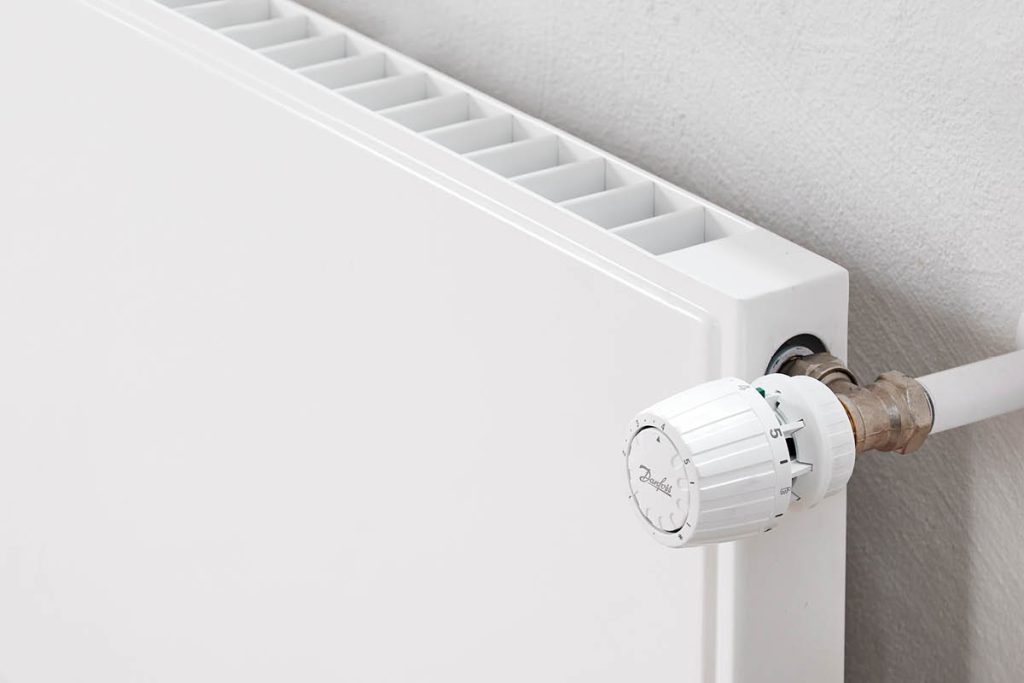
Heating a home, a flat or a holiday home can be expensive. And when it comes to heating with electric radiators, costs can be a key issue. Many people doubt whether it is a cheap or expensive solution. In this blog post we will take a closer look at the costs of the different types of heating.
There can be a big difference in how much money it costs to heat a home. It depends on various factors such as the form of heating - where in recent years - there have been large price increases for e.g. electricity and natural gas. But the price can also fluctuate greatly within the same heat source. The price of district heating, for example, varies greatly from provider to provider.
In addition, the price also depends on how big your home is. How well the home is insulated, as well as how long and how much you turn up the heat.
Bolius* has recently calculated the annual heating cost for a typical detached house to demonstrate the price difference for heating with different forms of energy. The calculation is based on a 130 m2 detached house with an annual energy consumption of 18,100 kWh including heating of domestic water. In addition, they have made annual calculations including depreciation, service and interest. Here it appears that district heating and all types of heat pumps are the cheapest solutions overall. While oil boilers and electric radiators top the list as most expensive.
Below is the overview. The number in brackets is the annual price including depreciation, service and interest.
District heating has an annual price of DKK 15,971 (DKK 18,514)
Oil boiler has an annual price of DKK 28,904 (DKK 34,209)
Gas boiler has an annual price of DKK 17,932 (DKK 22,782)
Electric radiators have an annual price of DKK 34,729 (DKK 35,551)
Wood stove has an annual price of DKK 24,225 (DKK 25,975)
Pellet boiler has an annual price of DKK 15,385 (DKK 20,260)
Heat pumps have an average annual price of DKK 10,052 (DKK 19,542)
As the figures show, heating with heat pumps is cheaper. However, a lot goes into depreciation, service and interest. While the price for depreciation, service and interest for electric radiators is minimal.
Heating your home with electric radiators can be expensive. And it's no secret that the old "toasters" that still hang in many houses and holiday homes are not very energy efficient.
But electric radiators are not necessarily an expensive or poor solution, so if electric radiators are your only option, it doesn't have to be bad at all. It is again crucial to look at all the factors that affect the overall heating. A well-insulated home with modern energy-efficient electric radiators has a significant effect on how expensive it is.
If you want to calculate how much an electric radiator costs to use, you need to know the radiator's watt consumption and the price of your electricity. An electric radiator usually uses between 1.500 and 2.000 watts. If a 1.500-watt electric radiator is turned on for 8 hours a day, it will use 12 kWh. If we assume an electricity price of DKK 2 per kWh, heating with the electric radiator will cost DKK 24 for a day. (In the UK this would be app. 24,5p per kWh x 12 = 2.94 £ per day and in Germany/Europe this would be app. 0,3951€ x 12 = 4,74 € per day)

Hudevad Curva Power is a modern and incredibly energy-efficient electric radiator. Using dry inertia technology, the radiator heats the air with a convection process.
It is important to highlight that there is a big difference between modern electric radiators compared to those that were available just 20 years ago. Modern electric radiators are not only more efficient, but also give you a more varied selection of models, so you can get a size and style that suits your home's heating needs.
There is potentially a lot to save with correct sizing and control of the electric radiators. And this can help keep the costs of electric radiators down. Effective control of electric radiators can include functions such as time scheduling, temperature control and remote control via an app. By being able to adapt the heating to specific needs and avoiding unnecessary operation, you can achieve more efficient and economical use of the electric radiators.
Regardless of which heating method you choose, it is important to consider your individual needs, living conditions, budget and possibilities. If you have any questions or would like further advice, please feel free to contact us.
* About the Knowledge Centre Bolius
The purpose of Bolius is to improve the quality of life for everyone by making knowledge about housing accessible and useful – and they do so solely with your interests in mind. The Knowledge Centre Bolius is a non-profit organisation that provide free and impartial knowledge because they are owned by the philanthropic association Realdania.
Bolius's heating calculations are therefore based on a Danish house and Danish heating costs, but the trends and costs for the different heating methods paint a similar picture in England and Central Europe. To see the full overview and dive into the calculations, see Bolius article here





